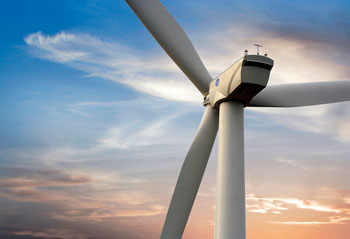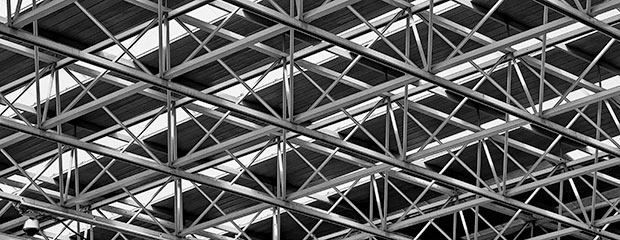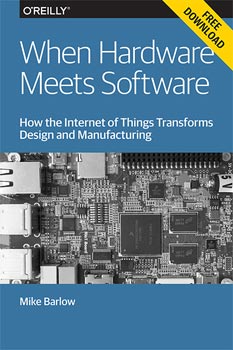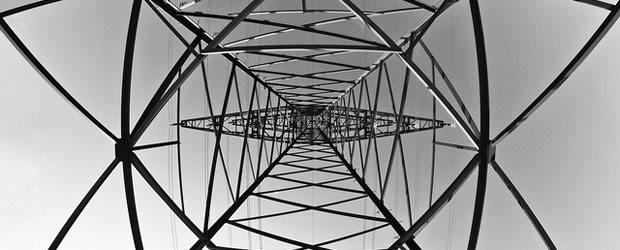"Industrial Internet" entries

A vision of a decentralized IoT stack
The O'Reilly Radar Podcast: Eric Jennings on the importance of creating a decentralized Internet for the Internet of Things.
Subscribe to the O’Reilly Radar Podcast to track the technologies and people that will shape our world in the years to come.
In this week’s Radar Podcast, I followed up with Eric Jennings, co-founder and CEO of Filament, about his vision of a decentralized Internet. In last week’s episode, Jennings chatted with O’Reilly’s Mac Slocum a bit about a decentralized Internet in the context of the Internet of Things, and I ventured a bit deeper into the topic this week.
I asked Eric about the model — what would a decentralized Internet for the IoT look like and how would it work? He likened it to the Web:
We actually take a large portion of our model, our mental model, about a decentralized IoT from the early Web. If you imagine back in the early Web days — way back, mid-80s, early 90s — HTTP and websites had just started coming around, and they were originally focused and designed for academic research papers to link to each other.
Back then there was this entire, and there still is, there’s an entire open protocol stack that the Web runs on. Since any site could link directly to another site, it became very open and friendly, and there were all these wonderful things that emerged from — the Facebooks and Googles and WordPresses of the world were built on top of this standardized open reference platform.
What we like to think is, what would that look like if you took that concept and mapped it over onto the Internet of Things? What similar analogies to the Facebooks and Googles and WordPresses would we see if we had a truly decentralized and open IoT stack, and not necessarily one that’s full of silos and verticalized specific solutions to small industry segments.

Embracing Java for the Internet of Things
Technology executive and enthusiast Mike Milinkovich on Java's role in shaping future enterprise development.

Hardware and software are coming together in new and exciting ways. To get a better sense of this excitement, one need look no further than the nascent explosion of connected devices and technologies. But how do we best cater development for these emerging paradigms, and how do more mature languages, like Java, fit into the equation?
I spoke with Mike Milinkovich, Executive Director at the Eclipse Foundation. Mike and his team are currently leading the charge to promote open source IoT protocols, runtimes, frameworks, and SDKs across a variety of languages, including Java. Eclipse’s IoT stack for Java is already being utilized by such companies as Philips, Samsung, and eQ-3. Here, he talks about Java’s unique standing in this emerging marketplace, and the impact of the open source community on IoT development.

We need an Internet that performs flawlessly, every second of every day
As we increasingly depend on connected devices, primary concerns will narrow to safety, reliability, and survivability.
Editor’s note: this interview with GE’s Bill Ruh is an excerpt from our recent report, When Hardware Meets Software, by Mike Barlow. The report looks into the new hardware movement, telling its story through the people who are building it. For more stories on the evolving relationship between software and hardware, download the free report.
More than one observer has noted that while it’s relatively easy for consumers to communicate directly with their smart devices, it’s still quite difficult for smart devices to communicate directly, or even indirectly, with each other. Bill Ruh, a vice president and corporate officer at GE, drives the company’s efforts to construct an industrial Internet that will enable devices large and small to chat freely amongst themselves, automatically and autonomously. From his perspective, the industrial Internet is a benign platform for helping the world become a quieter, calmer, and less dangerous place.“In the past, hardware existed without software. You think about the founding of GE and the invention of the light bulb — you turned it on and you turned it off. Zero lines of code. Today, we have street lighting systems with mesh networks and 20 million lines of code,” says Ruh. “Machines used to be completely mechanical. Today, they are part digital. Software is part of the hardware. That opens up huge possibilities.”
A hundred years ago, street lighting was an on-or-off affair. In the future, when a crime is committed at night, a police officer might be able to raise the intensity of the nearby street lights by tapping a smart phone app. This would create near-daylight conditions around a crime scene, and hopefully make it harder for the perpetrators to escape unseen. “Our machines are becoming much more intelligent. With software embedded in them, they’re becoming brilliant,” says Ruh. Read more…

What you need to know for the hardware-software convergence
Core competencies and essential reading from hardware, software, manufacturing, and the IoT.
As I noted in “Physical and virtual are blurring together,” we now have hardware that acts like software, and software that’s capable of dealing with the complex subtleties of the physical world. So, what must the innovator, the creator, the executive, the researcher, and the artist do to embrace this convergence of hardware and software?
At its core, this is about a shift from discipline toward intent. Individuals and institutions — whether they’re huge enterprises, small start-ups, or nonprofits — must be competent in several disciplines that increasingly overlap, and should be prepared to solve problems by working fluidly across disciplines.
To use Joi Ito’s example, someone who wants to develop a synthetic eye might begin to approach the problem with biology, or electronics, or software, or (most likely) all three together. Many problems can be solved somewhere in a large multidimensional envelope that trades off design, mechanics, electronics, software, biology, and business models. Experts might still do the best work in each discipline, but everyone needs to know enough about all of them to know where to position a project between them.
Below you’ll find the core competencies in the intersection between software and the physical world, and our favorite books and resources for each one.
Electronics for physical-digital applications
- Practical Electronics, by John M. Hughes: To know what’s possible and where to start, it’s essential to understand both the analog and digital sides of electronics. This is O’Reilly’s authoritative introduction to both analog and digital electronics, with information on circuit design, common parts and techniques, and microcontrollers.
- Raspberry Pi Cookbook, by Simon Monk: The Raspberry Pi is rapidly becoming the standard embedded computing platform for prototyping and experimentation, with enough computing power to run familiar interpreted programming languages and widely supported operating systems.
- Arduino Cookbook, by Michael Margolis: The Arduino microcontroller offers a fluid interface between digital and physical; it’s highly extensible and accessible to people with no prior experience in either electronics or code.

Welcome to the age of indie hardware
The shifting economics around manufacturing is fueling an indie hardware movement.
Editor’s note: this is an excerpt from our new report When Hardware Meets Software — download the free report here.
All trends rise and fall. A new generation of smart techies has emerged to challenge the false duality of the hardware versus software paradigm. The spiritual heirs of the ham radio operators and homemade rocket enthusiasts of the 1940s and 50s have coalesced to form a maker culture that is quietly subverting the standard industrial model of product design and development.Even if they aren’t the actual grandsons and granddaughters of the original hobbyists, they apply the same kind of grit, smarts and do-it-yourself confidence as earlier generations of inventors and tinkerers who labored in basements, backyards, and garages all over the world.
Unlike their predecessors, whose audiences were limited mostly to friends and family members, the new generation is sharing its inventiveness globally and selling gadgets through maker-friendly e-commerce markets such as Tindie, Make, and Grand St. Read more…

From factory to data center: The O’Reilly Radar Podcast
Nate Oostendorp on manufacturing and the industrial Internet, and Tim O'Reilly and Rod Smith discuss emerging tech.
Editor’s note: you can subscribe to the O’Reilly Radar Podcast through iTunes,SoundCloud, or directly through our podcast’s RSS feed.
The Industrial Revolution had a profound effect on manufacturing — will the industrial Internet’s effect be as significant? In this podcast episode, Nate Oostendorp, co-founder and CTO of Sight Machine, says yes — where mechanization ruled the Industrial Revolution, data-driven automation will rule this next revolution:
“I think that when you think about manufacturing 20 years from now, the computer and the network is going to be much more fundamental. Your factories are going to look a lot more like data centers do, where there’s a much greater degree of automation that’s driven by the fact that you have good data feeds off of it. You have a lot of your administration of the factory that will be done remotely or in a back office. You don’t necessarily need to have engineers on a floor watching a machine in order to know what’s going on. I think fundamentally, the number of players in a factory will be much smaller. You’ll have much more technical expertise but a fewer number of people overall in a factory setting.”
According to Oostendorp, we’re already seeing the early effects today in an increased focus on quality and efficiency. Read more…

The next industrial revolution
It's all about software, but it's a little harder than that.
If you Google “next industrial revolution,” you’ll find plenty of candidates: 3D printers, nanomaterials, robots, and a handful of new economic frameworks of varying exoticism. (The more generalized ones tend to sound a little more plausible than the more specific ones.)
The phrase came up several times at a track I chaired during our Strata + Hadoop World conference on big data. The talks I assembled focused on the industrial Internet — the merging of big machines and big data — and generally concluded that in the next industrial revolution, software will take on the catalytic role previously played by the water wheel, steam engine, and assembly line.
The industrial Internet is part of the new hardware movement, and, like the new hardware movement, it’s more about software than it is about hardware. Hardware has gotten easier to design, manufacture, and distribute, and it’s gotten more powerful and better connected, backed up with a big-data infrastructure that’s been under construction for a decade or so. Read more…

Talking to big machines
What “design beyond the screen” means for the industrial Internet.

GE’s 3.2-103 wind turbine analyzes tens of thousands of data points every second and communicates seamlessly with neighboring turbines, service technicians, and operators.
Design beyond the screen is a much broader and more transformative concept than just that, though: it encompasses changes in the relationships between humans and machines and between machines and other machines. Good design beyond the screen makes interaction more fluid and elevates both people and machines to do their best work. The impact of good design beyond the screen could be huge, and could extend well beyond consumer electronics into heavy industry and infrastructure. Read more…

Extracting value from the IoT
Data from the Internet of Things makes an integrated data strategy vital.

Union Pacific uses infrared and audio sensors placed on its tracks to gauge the state of wheels and bearings as the trains pass by.
The Internet of Things (IoT) is more than a network of smart toasters, refrigerators, and thermostats. For the moment, though, domestic appliances are the most visible aspect of the IoT. But they represent merely the tip of a very large and mostly invisible iceberg.
IDC predicts by the end of 2020, the IoT will encompass 212 billion “things,” including hardware we tend not to think about: compressors, pumps, generators, turbines, blowers, rotary kilns, oil-drilling equipment, conveyer belts, diesel locomotives, and medical imaging scanners, to name a few. Sensors embedded in such machines and devices use the IoT to transmit data on such metrics as vibration, temperature, humidity, wind speed, location, fuel consumption, radiation levels, and hundreds of other variables. Read more…

Why PayPal jumped the software-hardware gap
A software company reaches into the physical world with hardware.
PayPal is a software company, but when I met with Josh Bleecher Snyder, director of software engineering at PayPal, it was to talk about hardware. He’s leading the development of Beacon, PayPal’s new hands-free payment platform. At its heart is a finger-size stick that uses Bluetooth Low Energy to connect with mobile phones and confirm identity.
Paypal’s move into hardware extends its software into the physical world — a key idea behind our Solid Conference. What was once a system confined to screens and keyboards is now part of a new set of interactions in brick-and-mortar stores.
Beacon is part of a vast PayPal stack, and Bleecher Snyder’s team solved problems with a blend of hardware and software thinking — writing code in Go that was efficient enough for Beacon’s processor to be underclocked and avoid overheating, and to anticipate attacks on PayPal’s service that might come from compromised hardware. His entire system hews to PayPal’s “don’t be creepy” mantra by quickly and permanently discarding data that isn’t used in transactions. Read more…


